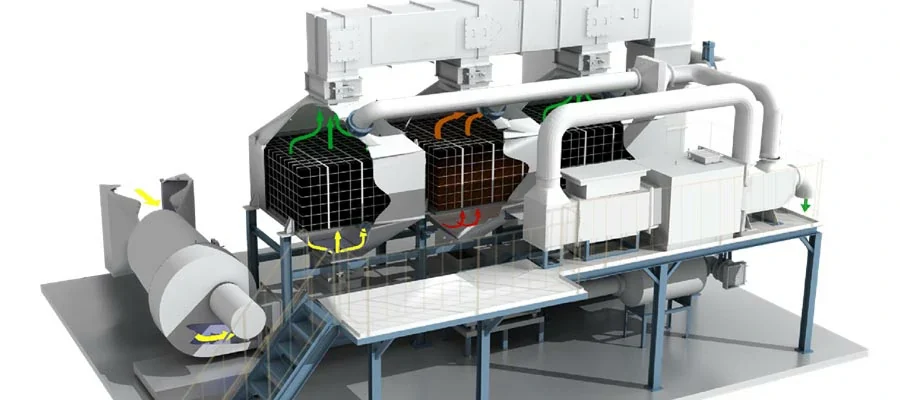Industrial facilities face the challenge of treating harmful pollutants in their exhaust gases. This article explores a powerful solution: combining activated carbon adsorption with catalytic combustion. This innovative approach offers superior efficiency, reduced energy costs, and broader applicability compared to traditional methods.
Table of Contents
- Introduction to Activated Carbon Adsorption
- Benefits of Combining Activated Carbon Adsorption with Catalytic Combustion
- Enhanced Treatment Efficiency
- Reduced Energy Consumption
- Extended Activated Carbon Lifespan
- Minimized Secondary Pollution
- Broad Applicability
- Important Considerations
- Catalyst Selection
- Activated Carbon Selection
- Regeneration and Replacement
- Conclusion
Introduction to Activated Carbon Adsorption
Activated carbon adsorption is a widely used technology for treating exhaust gases. It works by adsorbing harmful substances onto the surface of activated carbon, thus purifying the exhaust gases. However, simple activated carbon adsorption has some limitations, such as limited adsorption capacity and the need for frequent carbon replacement. To overcome these issues, combining activated carbon adsorption with catalytic combustion has proven effective.
Benefits of Combining Activated Carbon Adsorption with Catalytic Combustion
Enhanced Treatment Efficiency
Combining activated carbon adsorption with catalytic combustion significantly improves the efficiency of exhaust gas treatment. Catalytic combustion oxidizes and decomposes harmful substances in the exhaust gas at lower temperatures, removing residual pollutants. This combined treatment technology effectively handles various harmful gases, including organic compounds, nitrogen oxides, and sulfur oxides. This combination tackles a wider range of pollutants, including VOCs, NOx, and SOx, achieving exceptional removal rates.
Reduced Energy Consumption
Compared to using activated carbon adsorption or catalytic combustion alone, the combination reduces energy consumption. During catalytic combustion, the presence of catalysts lowers the temperature and pressure requirements for treating exhaust gases, thus saving energy consumption.
Extended Activated Carbon Lifespan
Combining these technologies extends the lifespan of activated carbon. Catalytic combustion decomposes harmful substances that are difficult for activated carbon to adsorb, reducing the load on the carbon and prolonging its service life. More tips for extending activated carbon lifespan, please check Honeycomb Activated Carbon Usage Instruction Notes, also similar to columnar activated carbon.
Minimized Secondary Pollution
The combined treatment technology minimizes secondary pollution. Catalytic combustion thoroughly oxidizes and decomposes harmful substances in the exhaust gas into harmless compounds, preventing the formation of secondary pollutants.
Broad Applicability
This combined treatment technology is suitable for various types of exhaust gases, including industrial emissions and vehicle exhaust. It effectively addresses the needs of different emission sources and meets environmental standards. The combination works best for low-concentration, high-volume exhaust gas treatment processes.

Important Considerations
- Catalyst Selection: Choosing the right catalyst and preventing poisoning is crucial for optimal performance.
- Activated Carbon Selection: Generally, 4mm columnar activated carbon with an iodine value above 800 and honeycomb activated carbon with a CTC value above 55% are preferred.
- Regeneration and Replacement: Proper regeneration and replacement strategies are essential for maintaining system effectiveness and reliability.
Conclusion
Activated carbon adsorption combined with catalytic combustion offers numerous advantages, including enhanced treatment efficiency, reduced energy consumption, extended activated carbon lifespan, minimized secondary pollution, and broad applicability. This combination is valuable in the environmental protection field, promoting sustainable development and environmental conservation.
Article keywords: activated carbon adsorption, catalytic combustion, exhaust gas treatment, industrial air purification, gas-phase filtration, energy-efficient gas treatment, pollution control technology, activated carbon lifespan extension, secondary pollution reduction, honeycomb activated carbon.




